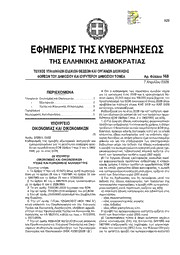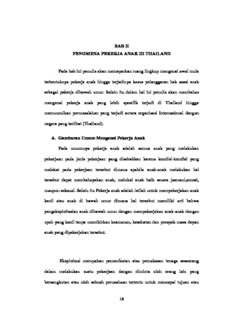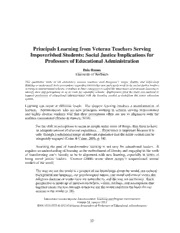
Essentials of the living world PDF
Preview Essentials of the living world
©Pim Leijen/Shutterstock John19232_fm_i-xvii.indd 1 12/18/18 6:06 PM ESSENTIALS OF THE LIVING WORLD, SIXTH EDITION Published by McGraw-Hill Education, 2 Penn Plaza, New York, NY 10121. Copyright ©2020 by McGraw-Hill Education. All rights reserved. Printed in the United States of America. Previous editions ©2017, 2013, and 2010. No part of this publication may be reproduced or distributed in any form or by any means, or stored in a database or retrieval system, without the prior written consent of McGraw-Hill Education, including, but not limited to, in any network or other electronic storage or transmission, or broadcast for distance learning. Some ancillaries, including electronic and print components, may not be available to customers outside the United States. This book is printed on acid-free paper. 1 2 3 4 5 6 7 8 9 LWI 21 20 19 ISBN 978-1-260-21923-4 (bound edition) MHID 1-260-21923-2 (bound edition) ISBN 978-1-260-49480-8 (loose-leaf edition) MHID 1-260-49480-2 (loose-leaf edition) Executive Portfolio Manager: Michelle Vogler Senior Product Developer: Anne Winch Senior Marketing Manager: Britney Ross Senior Content Project Manager: Vicki Krug Lead Assessment Project Manager: Tammy Juran Senior Buyer: Sandy Ludovissy Lead Designer: David W. Hash Lead Content Licensing Specialist: Lori Hancock Cover Image: ©Pim Leijen/Shutterstock Compositor: MPS Limited All credits appearing on page or at the end of the book are considered to be an extension of the copyright page. Library of Congress Cataloging-in-Publication Data Johnson, George B. (George Brooks), 1942- author. Essentials of the living world / George B. Johnson. Sixth edition. | New York, NY : McGraw-Hill Education, [2019] | Includes indexes. LCCN 2018042636| ISBN 9781260219234 (bound edition : alk. paper) | ISBN 9781260494808 (loose-leaf edition) LCSH: Biology—Textbooks. LCC QH308.2 .J6199 2019 | DDC 570—dc23 LC record available at https://lccn.loc.gov/2018042636 The Internet addresses listed in the text were accurate at the time of publication. The inclusion of a website does not indicate an endorsement by the authors or McGraw-Hill Education, and McGraw-Hill Education does not guarantee the accuracy of the information presented at these sites. mheducation.com/highered John19232_fm_i-xvii.indd 2 12/18/18 6:06 PM Brief Contents Chapter 0 Studying Biology 2 Part 5 The Living Environment Chapter 19 Populations and Communities 376 Part 1 The Study of Life Chapter 20 Ecosystems 396 Chapter 1 The Science of Biology 16 Chapter 21 Behavior and the Environment 422 Chapter 22 Human Influences on the Living World 436 Part 2 The Living Cell Part 6 Animal Life Chapter 2 The Chemistry of Life 34 Chapter 3 Molecules of Life 48 Chapter 23 The Animal Body and How It Moves 454 Chapter 4 Cells 64 Chapter 24 Circulation and Respiration 470 Chapter 5 Energy and Life 90 Chapter 25 The Path of Food Through the Animal Chapter 6 Photosynthesis: Acquiring Energy from the Body 490 Sun 104 Chapter 26 Maintaining the Internal Environment 508 Chapter 7 How Cells Harvest Energy from Food 118 Chapter 27 How the Animal Body Defends Itself 518 Chapter 28 The Nervous System 538 Part 3 The Continuity of Life Chapter 29 Chemical Signaling Within the Animal Body 564 Chapter 8 Mitosis 134 Chapter 30 Reproduction and Development 578 Chapter 9 Meiosis 150 Chapter 10 Foundations of Genetics 164 Part 7 Plant Life Chapter 11 DNA: The Genetic Material 188 Chapter 12 How Genes Work 206 Chapter 31 Plant Form and Function 598 Chapter 13 The New Biology 224 Chapter 32 Plant Reproduction and Growth 620 Part 4 The Evolution and Diversity of Life Glossary 638 Index 652 Chapter 14 Evolution and Natural Selection 248 Chapter 15 Exploring Biological Diversity 276 Chapter 16 Evolution of Microbial Life 292 Chapter 17 Evolution of Plants 316 Chapter 18 Evolution of Animals 336 iii John19232_fm_i-xvii.indd 3 12/18/18 6:06 PM About the Author Dr. George B. Johnson is a researcher, educator, and author. Born in 1942 in Virginia, he went to college in New Hampshire (Dartmouth), attended graduate school in California (Stanford), and is Professor Emeritus of Biology at Washington University in St. Louis, where he has taught freshman biology and genetics to under- graduates for over 35 years. Also Professor of Genetics at Washington University’s School of Medicine, Dr. Johnson is a student of population genetics and evolution, author- ing more than 50 scientific journal publications. His laboratory work is renowned for pioneering the study of previously undisclosed genetic variability. His field research has centered on alpine butterflies and flowers, much of it carried out in the Rocky Mountains of Colorado, Wyoming, and, more lately, Montana. Other ecosystems he has explored in recent years include Brazilian and Costa Rican rain forests, the Florida Everglades, the seacoast of Maine, coral reefs off Belize, the ice fields and mountains of Pata- gonia, and, delightfully, vineyards in Tuscany. A profilic writer and educator, Dr. Johnson is the author of seven nationally recognized college texts for McGraw-Hill, including the hugely successful majors texts Biology (with botanist Peter Raven) and three nonmajors texts: Understanding Biology, The Living World, and this text, Essentials of the Living World. He has also authored two widely used high school biology textbooks, Holt Biology and Biology: Visualizing Life. In the more than 30 years he has been authoring biology texts, over 3 million students have been taught from textbooks Dr. Johnson has written. Dr. Johnson has been involved in innovative efforts to incorporate interactive learning and Internet experiences into our nation’s classrooms. He has served on a National Research Council task force to improve high school biology teaching and as the founding director of The Living World, the education center at the St. Louis Zoo, where he was responsible for developing a broad range of innovative high- tech exhibits and an array of new educational programs. ©George B. Johnson St. Louis students may be familiar with Dr. Johnson as the author of a weekly science column, “On Science,” appearing for many years in the St. Louis Post Dispatch. Dedicated to educating the general public about today’s science, Dr. Johnson continues to write new columns regularly on current issues in which science plays a key role, issues such as AIDS, the environment, cloning, genetic engineering, and evolution. The columns, focused on explaining how and why, are intended to give readers the tools to think about these issues as citizens and voters. You may follow his columns on his blog: biologywriter.com. Dr. Johnson is best known for the clarity of his writing. “Most students are very interested in science,” he points out, “but are put off by the terminology. When you don’t know what the words mean, its easy to slip into thinking that the matter is difficult, when actually the ideas are simple, easy to grasp, and fun to consider. It’s the terms that get in the way, that stand as a wall between students and science.” In his writ- ing, Dr. Johnson aims to turn those walls into windows, so that students can peer in and join the fun. Analogies are his tool. In each chapter, he looks for simple analogies that relate the matter at hand to things we all know. As science, analogies are not exact, trading precision for clarity. “But if I do my job right,” Johnson explains, “the key idea is not compromised by the analogy I use to explain it, but rather revealed.” iv John19232_fm_i-xvii.indd 4 12/18/18 6:06 PM Preface Focus on the Essentials Today’s Biology Explained While your students may not need to learn the details of molecular In preparing this new sixth edition of Essentials of the Living World, I engineering, there is no getting around the fact that their future lives have endeavored to focus more tightly on that first word, Essentials. will be impacted in very tangible ways by what is going on today in In previous editions, I had fleshed out the core concepts with a good biology. With that in mind, I have tried to give you, the instructor, deal of background material. A well-intentioned approach, this has a useful tool for explaining current discoveries to your students. had an unfortunate consequence: While useful in a higher-level biol- Genetic engineering of crops is of interest to many students and ogy course, the added material gave struggling nonmajor students a needs careful explaining. An even more crucial challenge is the need lot to learn that they didn’t need to know—and that their instructors to clearly explain to nonmajor biology students our new ability to edit were not teaching. An instructor teaching students majoring in biol- genes. I have chosen to devote many pages to CRISPR in this edition, ogy needs to explain to them how the shape of p orbitals affects a explaining how it was discovered (which explains its weird name), covalent chemical bond; an instructor teaching nonmajors might not. the many impacts it is already having on medicine, and its potential My job as a text writer is to provide you, the instructor, with a tool, a use in gene drives. The promise of gene drives to rapidly eliminate text that helps you explain to students the core ideas of biology you malaria is exciting—and a little scary. Teaching this is a lot of fun, are teaching. Anything you see in this new edition is indeed essential. and important, but needs a clear text to support your explanation. Breaking Up Material into Learnable Bites Relevancy A student sometimes looks in horror at a page of text, a dense field of words concealing something he or she needs to learn. In this The use of real-world examples to demonstrate the importance edition, I have put a scalpel to work on these pages, trimming long of biology in the lives of your students is widely recognized as an sections of text into more bite-sized bits, with subheads to increase effective teaching strategy for the introductory biology classroom. comprehension and retention. Each concept is introduced by a learn- Students want to learn about their stuff, the topics they encounter ing objective and bookended by a question requiring the student to on Facebook, and the topics other students are interested in and talk put that concept to work. This results in a more precisely blocked- out text, with each bit you are teaching clearly identified and keyed to assessment. A Brighter, More Open Look This text has always been enriched by a wealth of art and photos. This edition has a snappy new design, with larger font sizes and more open spaces. The lay- out of this page, for example, makes the point clearly. ©Don Farrall/Getty Images ©Tanya Little/Shutterstock v John19232_fm_i-xvii.indd 5 12/18/18 6:06 PM vi Preface about. To give instructors tools to address this student interest, this Relevancy Readings edition offers several new relevancy-based resources. Relevancy Readings Answering Your Questions About… In many chapters, new Answering Your Questions About… readings Medical Marijuana 114 directly address matters of immediate interest to students. Topics Energy Drinks 127 include vaping and e-cigarettes, energy drinks, how to read a food Vaping 146 label, global warming, biological clocks, cloning your dog, LGBTQ, Cloning Your Dog 240 the opioid epidemic, and many others. The A Closer Look feature “A Weather and Climate 410 Day in the Life of Your Body” lets students consider how often their Global Warming 442 heart beats and their lungs inhale, how fast their hair and fingernails Food Labels 496 grow, and other fascinating events. Plastic Microbeads 524 The Opioid Crisis 550 Relevancy Modules Biological Clocks 637 New Relevancy Modules correspond with each unit in Essentials of the Living World, 6e. These modules demonstrate the connections A Closer Look between biological content and topics that are of interest to society as a whole. Each module consists of an overview of basic scientific con- Darwin and Moby Dick 256 cepts and then a closer look at the application of these concepts to the Microbial Bartenders 300 topic. Assessment questions, specific to the module, are also available. The Oldest Living Things 331 These modules are available as a supplementary e-book to the Metabolic Efficiency and the Length of Food Chains 402 existing text within Connect and may be assigned by the instructor The Dance Language of the Honeybee 433 for use in a variety of ways in the classroom. Examples of topics A Day in the Life of Your Body 468 covered include cancer biology, fermentation science, weed evolu- On Being a Whale 488 tion, antibiotic resistance, mega crops, the biology of weight gain, How Hormones Control Your Kidney’s Functions 516 and climate change. New topics are planned for launch each year to A Sense of Where You Are 556 keep this resource current. A Closer Look at the Science Behind Sexual Orientation 584 Relevancy Videos: BioNow Today’s Biology Like the Inquiry & Analysis feature at the end of each chapter of Lionfish Are Destroying the Caribbean 27 Essentials of the Living World, BioNow videos, narrated and produced Acid Rain 45 by educator Jason Carlson, provide a relevant, applied approach Prions and Mad Cow Disease 58 that allows your students to feel they can actually do and learn biol- When Membranes Don’t Work Right 86 ogy themselves. While tying directly to the content of your course, Babies with Three Parents 154 the series of videos helps students relate their daily lives to the biol- Tracing Your Family History with DNA 181 ogy you teach, and then connect what they learn back to their lives. The Father’s Age Affects the Risk of Mutation 195 Each video provides an engaging and entertaining story about DNA and the Innocence Project 232 applying the science of biology to a real situation or problem. Attention Race and Medicine 285 is given to using tools and techniques that the average person would Has Life Evolved Elsewhere? 296 have access to, so your students see the science as something they can Fish Out of Water 363 do and understand. The War Against Urban Deer 381 The Global Decline in Amphibians 446 Test-Tube Hamburgers? 507 Biology and Staying Healthy Can Lactose-Intolerant People Ever Enjoy Ice Cream? 98 The Paleo Diet 130 Protecting Your Genes 197 Drugs from Dirt 221 Bird and Swine Flu 305 Why Don’t Men Get Breast Cancer? 577 Air-Cleaning Plants 618 John19232_fm_i-xvii.indd 6 12/18/18 6:07 PM New to This Edition Editing Your Genes. The most exciting advances since this text’s an effective vaccine, but the potential for future epidemics remains last edition have been applications of a new, easy-to-use tool called a very real threat. CRISPR that allows researchers to edit genes. As described in Sec- The Search for Life on Other Planets. For over 20 years, tion 11.4 on pages 198–200, the gene-editing tool CRISPR is being astronomers have been detecting planets orbiting distant stars. As used to treat human disease on many fronts, including developing described in Section 16.1 on pages 296–297, over 10,000 had been a potential cure for AIDS, facilitating organ transplants from pigs identified. Might any of them be enough like earth to harbor life? (!), correcting disease-causing mutations such as cystic fibrosis and In 2016, astronomers found a candidate planet 1,400 light-years sickle-cell disease, and genetically modifying a patient’s own cells from Earth. Labeled Kepler 452b, it orbits a star very much like our to fight leukemia. sun. In the last two years, they have reported finding several other Can CRISPR Eliminate Malaria? Researchers have begun to “Goldilocks” exoplanets much closer to earth. One is only 4 light- test the possibility of incorporating CRISPR in a so-called gene years away, practically a neighbor. drive. As described in Section 11.5 on pages 201–202, the approach Role of Volcanoes in Mass Extinctions. A large asteroid slammed allows a CRISPR-modified gene to spread through entire popula- into earth 66 million years ago (recent, more accurate dating has tions of malaria-bearing mosquitos, carrying a gene alteration that revised the old “65 million years ago” date), the same time dinosaurs makes the mosquitos sterile. This approach has the potential to went extinct. Cause and effect? Perhaps not. Other mass extinctions eliminate malaria in one stroke! are not correlated with similar impacts, while almost all ARE cor- Geoengineering to Combat Global Warming. With atmo- related with huge volcanic eruptions, as described in Section 18.7 on spheric CO levels at a 2 million-year high and efforts to reduce page 363. This was even true 66 million years ago. Perhaps in this 2 emissions faltering, attempts to engineer the earth’s climate offer instance, the asteroid impact triggered volcanic eruptions, like setting what may be our best hope of combating global warming. A off a bear trap with a nudge. so-called geoengineering approach, described in the Chapter 6 open- Meet the Denisovans. When DNA was recovered from an ing essay on pages 104–105, removes CO from the atmosphere by ancient fingerbone found in Siberia, and its entire genome was 2 fertilizing earth’s oceans to induce massive photosynthesis. Earth’s sequenced, the sequence proved to be human, but was unlike oceans are rich in marine algae, their growth limited primarily by either Neanderthals or modern humans. It was a new species lack of iron (Fe is a key component of chlorophyll). In the lab, of human. Now called the Denisovans (after the name of the every pound of iron added to ocean water could remove as much cave where the fingerbone was found), this ancient species of as 100,000 pounds of carbon from the air! Very controversial small- human, described in the Chapter 18 opening essay on pages scale tests indicate that algal blooms are indeed produced by Fe fer- 336–337, has been shown in the last few years to have interbred tilization and that the blooms sink to the ocean bottom, the carbon with both Neanderthals and modern humans. Indeed, a recently effectively returned to where it came from. But there are potentially discovered fossil from the cave has proven to be the offspring of serious problems with this approach, so it needs much more work a Neanderthal–Denisovan mating! before its real promise can be evaluated. A Sense of Where You Are. How is LeBron James able to sink Ebola Outbreak. In 2014–2015, an outbreak of Ebola virus a jump shot without looking at the basket? Seeking an answer to in three densely populated countries of West Africa infected over this question, explored in Section 28.8 on pages 554–555, has led 24,000 people, killing half of them. Described in Section 16.3 on to two recent Nobel prizes and a lot of rat races through mazes. page 302, never has an Ebola outbreak affected so many people in Researchers were able to show that your brain keeps a “map” of so many different places. New outbreaks in 2017 and 2018 have where you are in three dimensions and constantly updates it as you failed to spread as far, at least partially due to the development of move through space. vii John19232_fm_i-xvii.indd 7 12/18/18 6:07 PM Students—study more efficiently, retain more and achieve better outcomes. Instructors—focus on what you love—teaching. SUCCESSFUL SEMESTERS INCLUDE CONNECT For Instructors 65% You’re in the driver’s seat. Want to build your own course? No problem. Prefer to use our turnkey, prebuilt course? Easy. Want to make changes throughout the semester? Sure. And you’ll save time with Less Time Connect’s auto-grading too. Grading They’ll thank you for it. Adaptive study resources like SmartBook® help your students be better prepared in less time. You can transform your class time from dull definitions to dynamic debates. Hear from your peers about the benefits of Connect at www.mheducation.com/highered/connect Make it simple, make it affordable. Connect makes it easy with seamless integration using any of the major Learning Management Systems—Blackboard®, Canvas, and D2L, among others—to let you organize your course in one convenient location. Give your students access to digital materials at a discount with our inclusive access program. Ask your McGraw-Hill representative for more information. ©Hill Street Studios/Tobin Rogers/Blend Images LLC Solutions for your challenges. A product isn’t a solution. Real solutions are affordable, reliable, and come with training and ongoing support when you need it and how you want it. Our Customer Experience Group can also help you troubleshoot tech problems—although Connect’s 99% uptime means you might not need to call them. See for yourself at status.mheducation.com John19232_fm_i-xvii.indd 8 12/18/18 6:07 PM For Students Effective, efficient studying. Connect helps you be more productive with your study time and get better grades using tools like SmartBook, which highlights key concepts and creates a personalized study plan. Connect sets you up for ©Shutterstock/wavebreakmedia success, so you walk into class with confidence and walk out with better grades. “ I really liked this app— Study anytime, anywhere. it made it easy to study when you don't have your Download the free ReadAnywhere app and access your online eBook textbook in front of you.” when it’s convenient, even if you’re offline. And the app automatically syncs with your eBook in Connect, all of your notes are available every - Jordan Cunningham, time you open it. Find out more at www.mheducation.com/readanywhere Eastern Washington University No surprises. The Connect Calendar and Reports tools keep you on track with the work you need to get done and your 13 14 assignment scores. Life gets busy; Connect tools help you keep learning through it all. Chapter 12 Quiz Chapter 11 Quiz Chapter 13 Evidence of Evolution Chapter 11 DNA Technology Chapter 7 Quiz Chapter 7 DNA Structure and Gene... and 7 more... Learning for everyone. McGraw-Hill works directly with Accessibility Services Departments and faculty to meet the learning needs of all students. Please contact your Accessibility Services office and ask them to email accessibility@mheducation.com, or visit www.mheducation.com/about/accessibility.html for more information. John19232_fm_i-xvii.indd 9 12/18/18 6:07 PM
The list of books you might like

Can’t Hurt Me: Master Your Mind and Defy the Odds

The Silent Patient

The 48 Laws of Power

A Thousand Boy Kisses
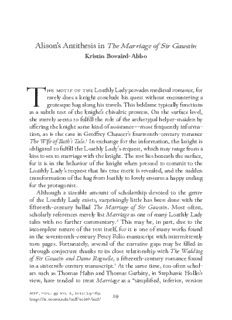
Alison's Antithesis in The Marriage of Sir Gawain

UFO Mail No 079 2006
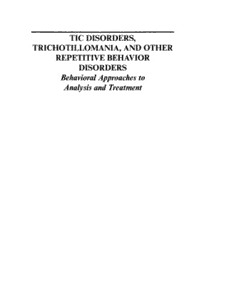
Tic Disorders, Trichotillomania, Other Repet. Behav. Disorders
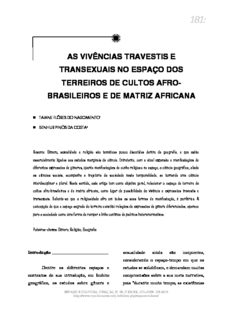
as vivências travestis e transexuais no espaço dos terreiros de cultos afro
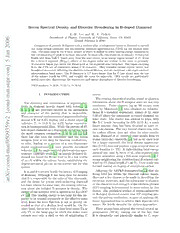
Boron Spectral Density and Disorder Broadening in B-doped Diamond

Teoría del conocimiento. Materialismo dialéctico

Parásitos
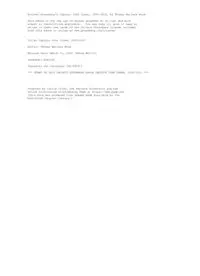
Captain John Crane 18001815 by Thomas W Knox
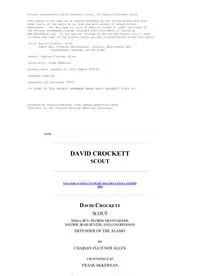
David Crockett Scout by Charles Fletcher Allen

The Doctors Christmas Eve by James Lane Allen
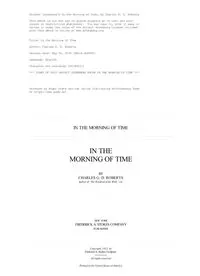
In the Morning of Time by Charles G D Roberts

Lance Corporal Adolf Hitler on the Western Front, 1914-1918

Scarlet malachite beetle Malachius aeneus (L.) (Col.: Melyridae): Status and distribution in the UK
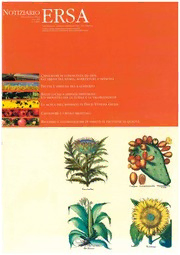
Notiziario ERSA 2006-1

Vade mecum da jurisprudência: dizer o direito 2020
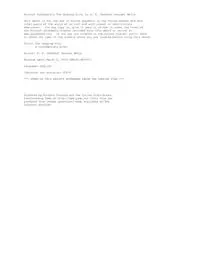
The Undying Fire by H G Wells
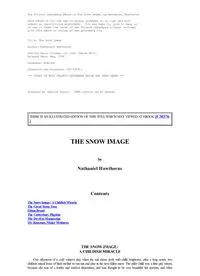
Etext of The Snow Image by Nathaniel Hawthorne
